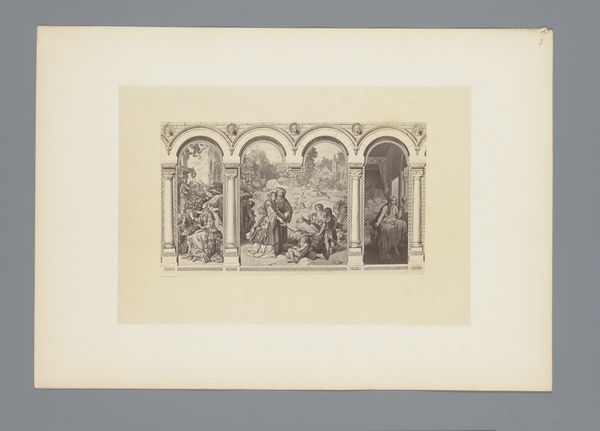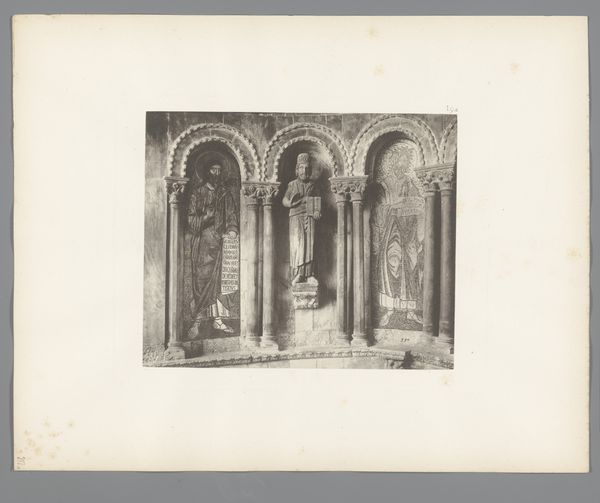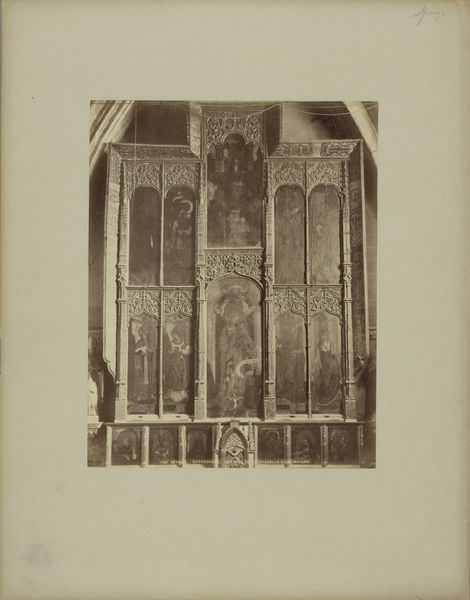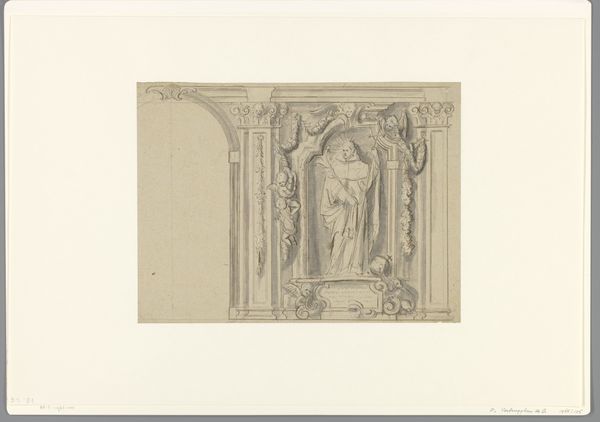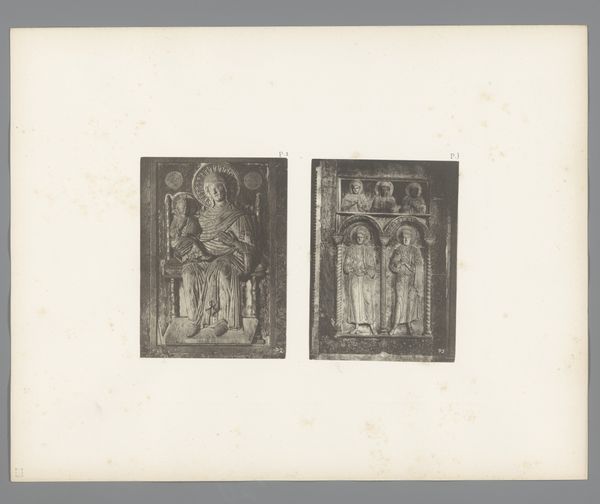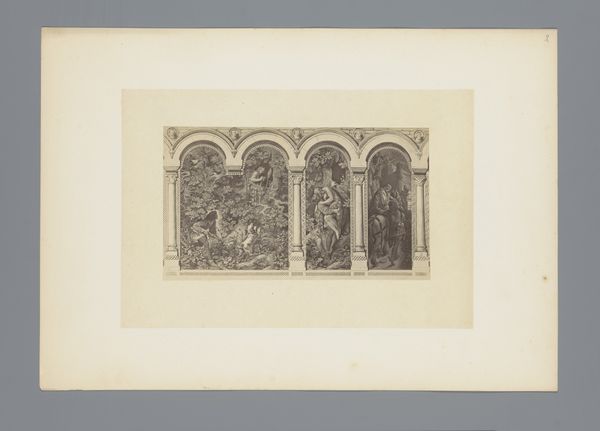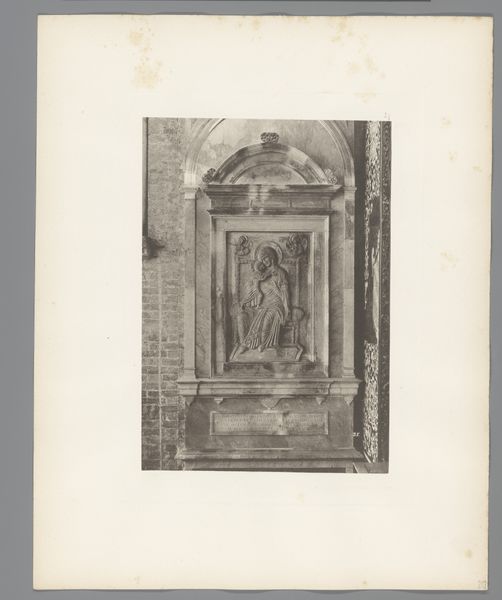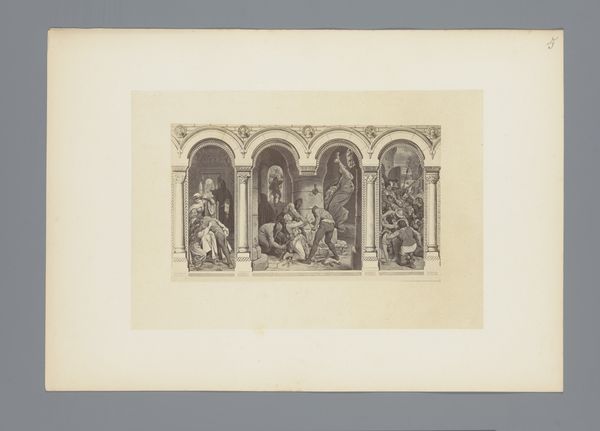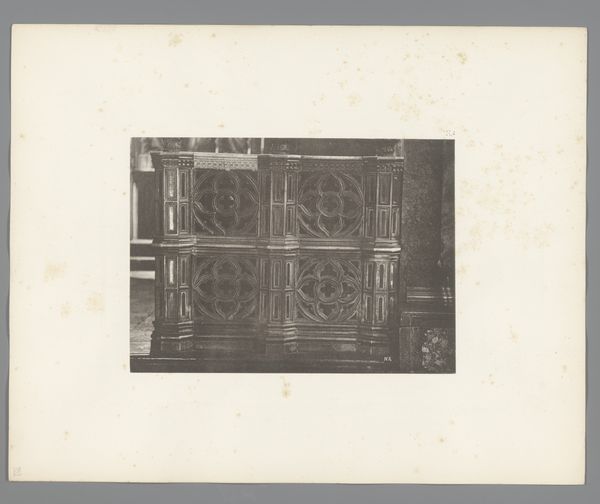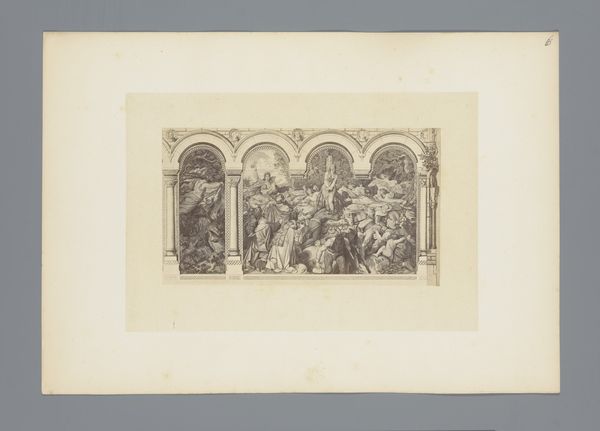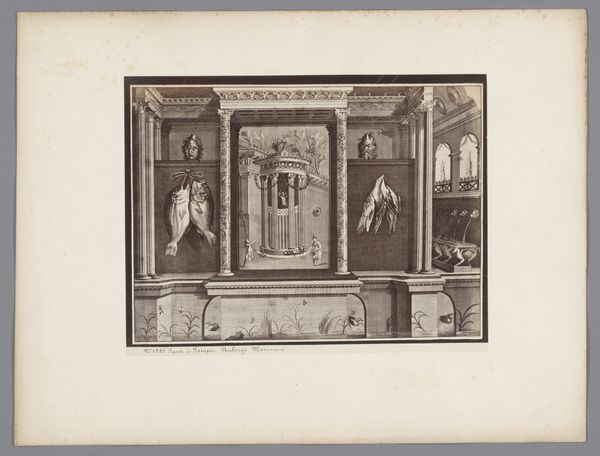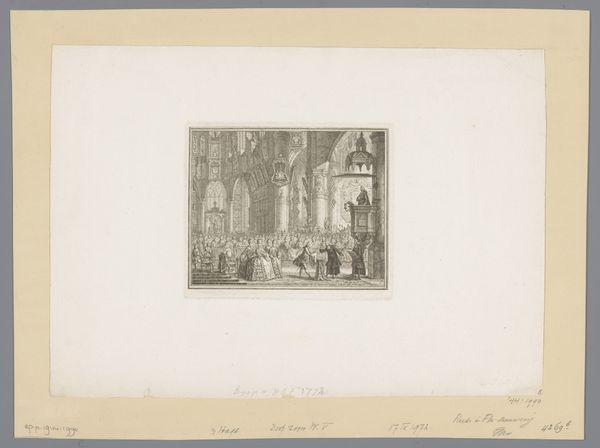
Twee sculpturen en een mozaïek, vermoedelijk van apostelen, van de San Marco in Venetië before 1885
0:00
0:00
mosaic, print, photography, sculpture, gelatin-silver-print
#
mosaic
#
medieval
# print
#
figuration
#
photography
#
sculpture
#
gelatin-silver-print
Dimensions: height 313 mm, width 393 mm
Copyright: Rijks Museum: Open Domain
Editor: This is a gelatin-silver print of sculptures and a mosaic, believed to depict apostles, from San Marco in Venice, dating to before 1885, by Carl Heinrich Jacobi. The subjects appear to be stone but it looks as though Jacobi has photographed them with an incredible softness, can you tell me more about it? Curator: Well, let's look closely at the labor and materials involved. Jacobi was photographing existing artworks, likely for documentation or distribution. Consider the social context: Venice was a popular tourist destination. Reproductions like this print allowed the broader population to consume Venetian art and culture. The gelatin silver printing process itself - think about the access to chemicals, darkroom spaces, glass plate negatives required. How might those material considerations democratize or restrict viewership and accessibility? Editor: That’s fascinating, I hadn't considered the print as a commodity itself, impacting accessibility! Is there any distinction to make between the material constraints or creative choices in making the actual artwork and reproducing it? Curator: Absolutely. The artisans who created the mosaics and sculptures within San Marco were working with marble, stone, glass, and gold under specific patronages and religious directives. Jacobi, in contrast, uses the relatively new medium of photography. He is not divinely inspired; his intent is to faithfully and professionally reproduce those sculptures and make a high art into a form of craft. Think about the role that reproductions play in how we understand 'originality.' Do you feel there is any tension there? Editor: I do, especially now, thinking about how many digital layers and iterations art goes through before even getting to an audience! It certainly prompts us to look beyond just the aesthetic and understand its complex layers. Thanks, I really appreciate it. Curator: Indeed. By examining these layers, from original production to reproduction, we gain insight into changing material values and their effects.
Comments
No comments
Be the first to comment and join the conversation on the ultimate creative platform.
